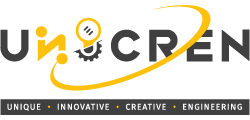A vital component of providing effectiveness, safety, and peak performance in the ever-changing world of industrial processes and automation is precise and trustworthy level measurement. In this field, level sensors are essential because they provide solutions for continuous level monitoring and point level detection in a variety of applications. Within this piece, we dig into the realm of sensors and examine the wide variety that is accessible, such as potentiometric, hydrostatic, optical, ultrasonic, capacitive, and point sensors.
- Point Level Sensors: These sensors are intended to identify a particular level within a container at a specific point. When the substance reaches a set level, these sensors offer binary feedback. Detecting high or low levels in tanks, silos, and hoppers are common uses. In point level sensing applications, accuracy and precision are essential for providing a prompt and precise response to varying levels.
- Level Sensors: In general terms, include a range of designs and technology that serve various contexts and industries. These sensors keep track of the fluid or substance level in a vessel constantly and report the results in real time. They are essential for preserving steady levels, avoiding overflow or run-dry conditions, and streamlining procedures.
- Capacitive Point Level Sensors: Capacitive point sensors are useful for detecting a variety of materials, such as liquids, powders, and granular particles, because they operate on the concept of capacitance. Since these sensors provide non-contact sensing, they are perfect for uses where direct contact can be hazardous or impractical.
- Optical Point Level Sensors: depend on a light beam’s interruption to determine if a substance is present or absent at a given level. These sensors are useful in sectors like the food and pharmaceutical industries where sensitivity and precision are crucial.
- Potentiometric Level Sensors: Potentiometric level sensors use an electrical signal to represent mechanical displacement in order to determine a substance’s level. These sensors are an affordable option for many businesses due to their affordability, dependability, and compatibility for a wide range of liquids.
- Hydrostatic Level Sensors: These sensors measure the pressure at the bottom of the container to calculate the liquid level, based on the principle of hydrostatic pressure. In places like water treatment facilities and industrial tanks, where excellent accuracy and stability are essential, hydrostatic level sensors are commonly utilized.
- Ultrasonic Level Sensors: Sound waves are used by ultrasonic level sensors to gauge the separation between the sensor and the surface of the substance. Because of their versatility, these sensors can be used in a wide range of industries, such as bulk material handling, chemical processing, and wastewater treatment.
Conclusion:
In summary, choosing the appropriate level sensor is critical to guaranteeing the smooth running of industrial processes. The wide variety of sensors that are available, including as capacitive, optical, potentiometric, hydrostatic, and ultrasonic ones, offers specialized solutions for various applications, whether it be point level detection or continuous level measurement. The incorporation of these sensors will be essential to maximizing productivity, guaranteeing security, and enhancing the effectiveness of many operations as industries develop.




